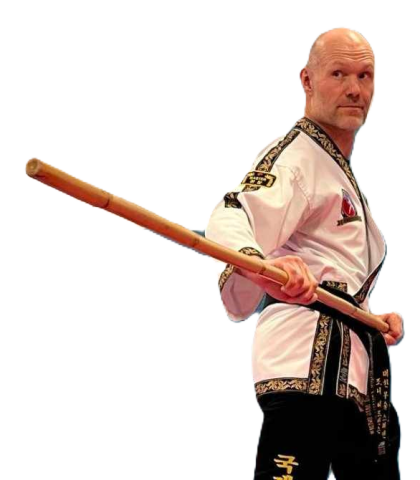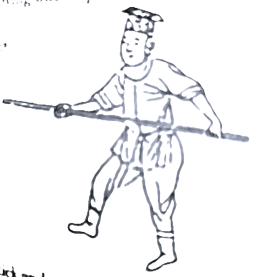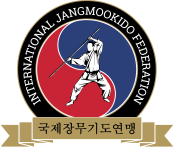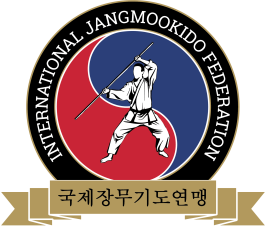

Curriculum
The longpole training
of Jangmookido

JANGMOOKIDO
is a martial art designed to improve your fighting skills of inner being, using the legendary long bamboo pole, THE CHANGBONG...

Curriculum
______________________________________________
Chase - posture, Gong gyeog - attack, Dol ri ki - spinning
_______________________________________________
PAL JANG SA - The eight great warriors forms
_______________________________________________
Sparring based on the PalJangSa forms
_______________________________________________
CHEOT BUL KKUGI - Putting out the candle
_______________________________________
KI BUB - Meditation and breathing technique
_______________________________________
For us...
the changbong is much more than jus a exercise tool. It's an extension of the body, organic in matrial and made to fuse with the organic grip of the hand. The changbong is a human long and have weight and you feel your body movin together with the changbong, the training activates yours arms and legs, abdominal, back muscles and your most important muscle, the heart. Balance, flexibility and body control, get you in the bargain. Breathing technique is also important in training to enter the calm and the present.
Jangmookido is...
a martial art designed to improve your fighting skills of inner being, using the legendary long bamboo pole, the Changbong... The balanced development of theory and practice can be possible trhought the training of changbong form, sparring, precision test and mental training. Which are the core of Jangmookido. The students of Jangmookido learn many of training methods and each type has a different purpose for practitioner development.

Is a training method that pursues physical and mental health based on actual combat. Step by step training of increasing difficulty from the PalJangSa Forms Series for white to black belt
- The eight great warriors changbong forms -
1. Kibon Changbong Hyung - Basic form
2. Ki Cho Changbong Hyung - Fundamental form
3. Cho Geup Changbong Hyung - Elementary form
4. Joong Geup Changbong Hyung - Intermediate Form
5. Goh Geup Changbong Hyung - Advanced form
6. Dae Geup Changbong Hyung - Progressive form
7. Moo Geup Changbong Hyung - Higher Advanced form
8. Simjang Bong Hyung - First black belt form

DAE RYUN - Sparring
Practice combat training technique that is difficult to learn with only Hyung training. You train against a real opponent and this training promotes timing, sense of distance, efficiency in fighting techniques, fighting spirit, endurance, toughness and flexibility.

JEONGDO - Precision test
Dae Ryun. In putting out candle with the changbong, without
touching the candle, only the gust of wind from the changbong tip, extinguishes the candle...
"The power you get from the compound movement,
you should be able to master yourself with perfection.

A new student of Jangmookido begins with learning the basics such as etiquette, different postures and footwork, and how to properly spins, blocking and attacking with the changbong...
The basics are only a guiding principle, your strongest posture is the one that fits your constitution. That cannot be taught to you, you have to find it for yourself... That is why, you most always return to the basics. This is what is importrant.
A skilled Jangmookido master knows when, where and how to use the softness, speedness and power. The mind and the body must be perfectly coordinated to release the spontaneous intelligence, intuition and balance in everything...
The new students of Jangmookido need to have willingness, patience, discipline and burning heart warming welcoming to their training, to get a chance to reach one of students goal; The Black Belt!

FAMILY SITE Han Moosa Martial Art
COMPANY Jangmookido
SEO Jonny Edvinsson
ADDRESS Hanmoosadojang, Linköping Sporthall, Snickaregatan 35, Linköping City, Sweden
PHONE 0703 127 618
E - MAIL jonny.edvinsson@gmail.com

